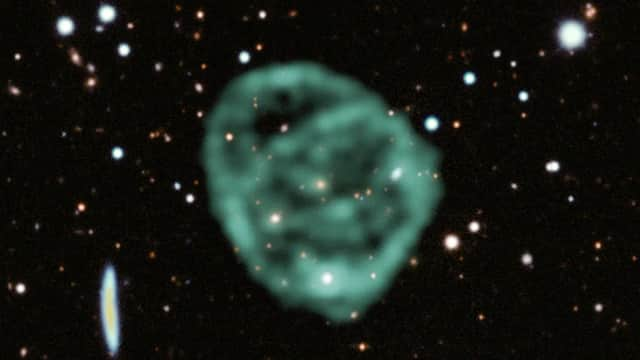Deep space radio rings: scientists say exploding stars may explain strange phenomena


Deep space holds vast radio circles that can easily wrap around galaxies, which were first discovered in 2019. These strange phenomena have perplexed scientists since their discovery by the telescope in Australia.
But these massive 'radio circles' have now been explained as shells made by galactic winds that have been shot across the universe by massive exploding stars. These appear to come from "starburst" galaxies where stars are born.
Advertisement
Hide AdAdvertisement
Hide AdBut more stars lead to more explosions and if they explode at the same time, they can rip the gas out of the galaxy and it will fly out as winds, going as fast as 2,000 kilometres each second.
Alison Coil, from the University of California San Diego, said: "These galaxies are really interesting. They occur when two big galaxies collide. The merger pushes all the gas into a very small region, which causes an intense burst of star formation. Massive stars burn out quickly and when they die, they expel their gas as outflowing winds.”
The discovery was made via computer simulations that replicated the size and properties of the radio rings - as well as the cool gas found in the centre. Those simulations showed winds flowing out of the galaxy for 200 million years before they stopped.
But when they did stop, a shock kept pushing high-temperature gas out of those galaxies and created a ring, and another reverse shock sent cool gas back into the galaxy. The findings are reported in a new paper, ‘Ionized Gas Extended Over 40 kpc in an Odd Radio Circle Host Galaxy’, published in the journal Nature.
Comment Guidelines
National World encourages reader discussion on our stories. User feedback, insights and back-and-forth exchanges add a rich layer of context to reporting. Please review our Community Guidelines before commenting.
